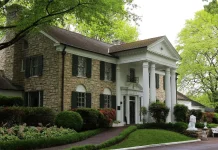Maidu Tribe Facts
One of the Native American words for all that is living is Maidu, pronounced MY-doo. These people inhabited the eastern tributaries of the Sacramento River in their ancestral territory. In present-day northern California, this includes the Feather, American, and Bear Rivers, which flow from the Sierra Nevada.
Almost 20 dialects of Penutian are spoken by the Maidu. They were divided into three main divisions. These three have distinct geographical features: the Maidu proper and the Konkow (Northwestern and Foothills), as well as the Nisenan (Southern and Valley).
There were most villages or tribelets in the valley group—permanent main hamlets with temporary satellite hamlets. To protect themselves and their hunting grounds from outsiders, the Maidu posted sentries regularly on the hills surrounding their villages.
Other Penutian tribes of central California, such as the MIWOK, YOKUTS, and WINTUN, shared many cultural traits with the Maidu. Acorns and other wild plant foods, small game, and fish were the main sources of nutrition for all hunter-gatherers.
There was little clothing on them. Other tribes in central California also lived in pole-framed, brush-covered shelters, but the Maidu built large earth-covered pit-houses with domed roofs. These dwellings had openings in their roofs that served both as doors and smoke holes.
Kuksu Cult was practiced by the Maidu as well as many of their neighbors. They also crafted beautiful baskets, which were characteristic of California Indians.
There were many games that the Maidu played, as did all Native North Americans. Games such as hoop-and-pole, tossing, dice, and hand games were popular pastimes for them.
An example of a hand game in which marks and unmarked bones were swapped back and forth between hands was letting other players bet on the hands that were being swapped.
During marathon games, participants would sometimes wager everything they owned—shell money, baskets, furs, tools, and weapons. In spite of Spanish attempts to move them into missions during the late 1700s and early 1800s, the Maidu and their neighbors preserved their traditional culture longer than the southern California tribes and the coastal peoples.
Due to violence and disease, their numbers drastically decreased during the California gold rush in 1849.
A majority of the contemporary Maidu live in Plumas County, California (especially in the Maidu branch); Butte County (especially in the Konkow branch); and El Dorado, Placer, and Yuba Counties (especially in the Nisenan branch). Several rancherias (small reservations) exist in the area.
Acorn, Bear, Coyote, Deer, Flower, and Toto Dances are among the traditional dances they regularly perform due to cultural revitalization. A salmon ceremony is performed annually by the Maidu to celebrate the return of the salmon for upriver spawning.
Read More: Mohawks – Native American Groups







